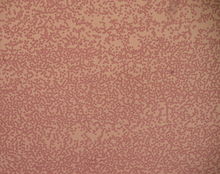| Cyclic neutropenia | |
|---|---|
| Other names | Periodic neutropenia, cyclic leucopenia, cyclic hematopoesis |
 | |
| Blood film with a striking absence of neutrophils, leaving only red blood cells and platelets. | |
| Specialty | Hematology |
| Symptoms | Fever, malaise, inflammation and infection of oral mucosa, respiratory tract, digestive tract, skin, and abdominal pain[1] |
| Usual onset | Infancy[1] |
| Causes | Mutation in ELANE gene[1] |
| Diagnostic method | Blood test, genetic testing[1] |
| Treatment | G-CSF[1] |
| Medication | Filgrastim[1] |
| Frequency | 1 in million (2018)[1] |
Cyclic neutropenia (CyN) is a rare hematologic disorder and form of congenital neutropenia that tends to occur approximately every three weeks and lasting for few days at a time due to changing rates of neutrophil production by the bone marrow. It causes a temporary condition with a low absolute neutrophil count and because the neutrophils make up the majority of circulating white blood cells it places the body at severe risk of inflammation and infection. In comparison to severe congenital neutropenia, it responds well to treatment with granulocyte colony-stimulating factor (filgrastim), which increases the neutrophil count, shortens the cycle length, as well decreases the severity and frequency of infections.